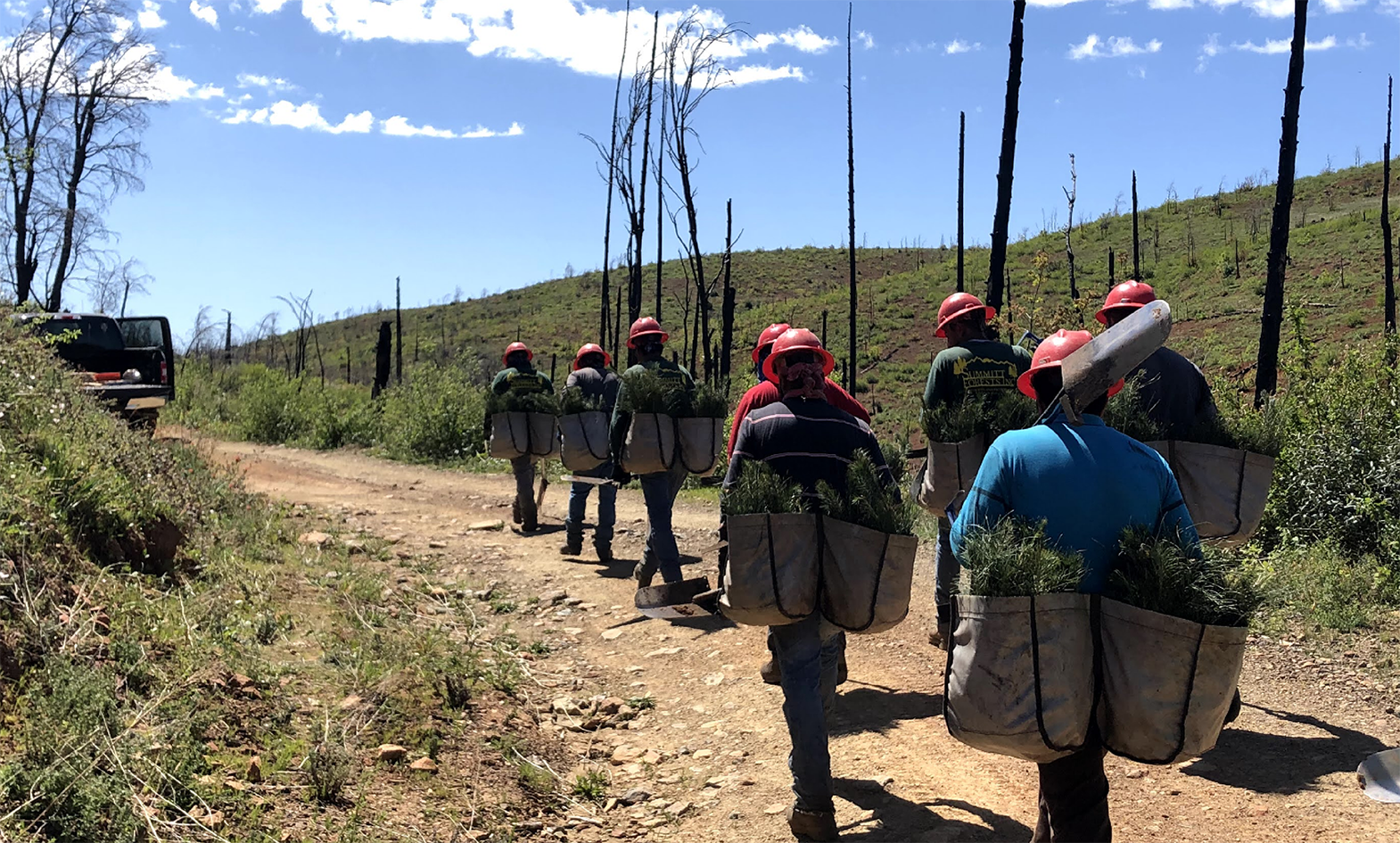
Michele Kurtz relishes the satisfaction of planting a tree.
“There’s nothing like that tangible activity,” she says. “You know it’s going to bring all sorts of benefits to people, to wildlife, to the climate. It’s an inspiring, simple activity.”
Kurtz, the senior director of corporate partner communications at American Forests, wants more people to experience those benefits; research shows trees boost mental and physical health.1 “If you can take 15 minutes in the middle of your day and walk down a street that has a lot of trees, don’t you feel a little different?” she asks.
A tree planted for every loan
A decade ago, LightStream felt a little different as well.
They were among the first paperless lenders, handling everything online. And to celebrate that difference, LightStream—now owned by Truist—pledged to plant a tree for every loan they funded.
So they teamed up with American Forests, and as the trees grew, so did the meaning behind the partnership. Julie Olian, director of philanthropy and communications for LightStream, says the tree planting has become about more than the symbolism of being paperless. It’s embracing those physical and mental benefits. “We truly believe in making the world more environmentally friendly and protected for all of us,” she says.
LightStream’s first efforts with American Forests helped restore part of fire-damaged Bitterroot National Forest in Montana. Today, projects span coast to coast, including restoring degraded watersheds in California and supporting urban tree-planting efforts in Miami and Houston (where trees are helping reduce stormwater runoff after hurricanes).
With projects in 23 states, LightStream has helped bring forests back to life. And in 2021, it surpassed its pledge of planting 1 million trees.
“We’re proud that we were one of the first to help develop these programs,” says Kristin Shuff, Truist senior vice president of LightStream Consumer Marketing.
Saplings today, for a greener tomorrow
When LightStream plants a tree for every loan, it’s done with precision. American Forests works with local groups to identify not only the best places to plant, but also the best kinds of trees for the area. “We work with them very closely to choose species we feel will thrive in an evolving climate,” says Kurtz. “We’re planting in a way that’s really looking to the future, for the trees’ survival.” The trees’ survival in turn helps the earth’s survival. Trees clean the air and slow climate change by absorbing gaseous air pollution and by catching particulate matter on their leaves. Trees in the U.S. absorb 17.4 million tons of air pollutants, preventing 670,000 cases of acute respiratory symptoms annually.2
LightStream’s support of American Forests focuses on planting saplings in rural and wilderness areas. And together, they’re educating people on the value of trees—and on the idea that their value should be available to all.
“If you look at a map of tree canopy across the United States,” says Kurtz, “you find the neighborhoods with the most trees tend to be wealthier.” The organization wants to change that, so they’re planting trees that will do well in urban environments, too.
Investing in our planet
LightStream is one way Truist is helping clients achieve their sustainability goals. As part of its environmental, social, and governance efforts, Truist has set a goal of net-zero greenhouse gas emissions by 2050.
While there’s still more work to do to fight environmental challenges, with more collaborations like LightStream and American Forests, hope isn’t lost.
“Companies have a community obligation, but a company like ours has been doing it for so long, it doesn’t feel like an obligation at all,” Shuff says. “It’s just an extension of who we are.”
1 “6 Ways Trees Benefit All of Us,” The Nature Conservancy, October 9, 2020.
2 Source: LightStream
3 Source: American Forests